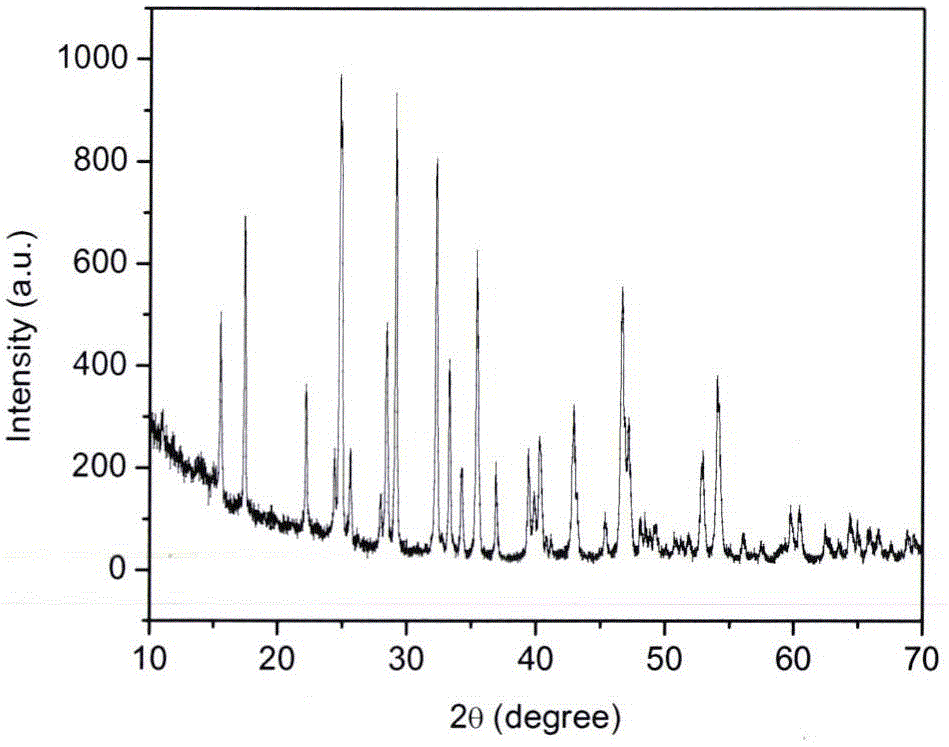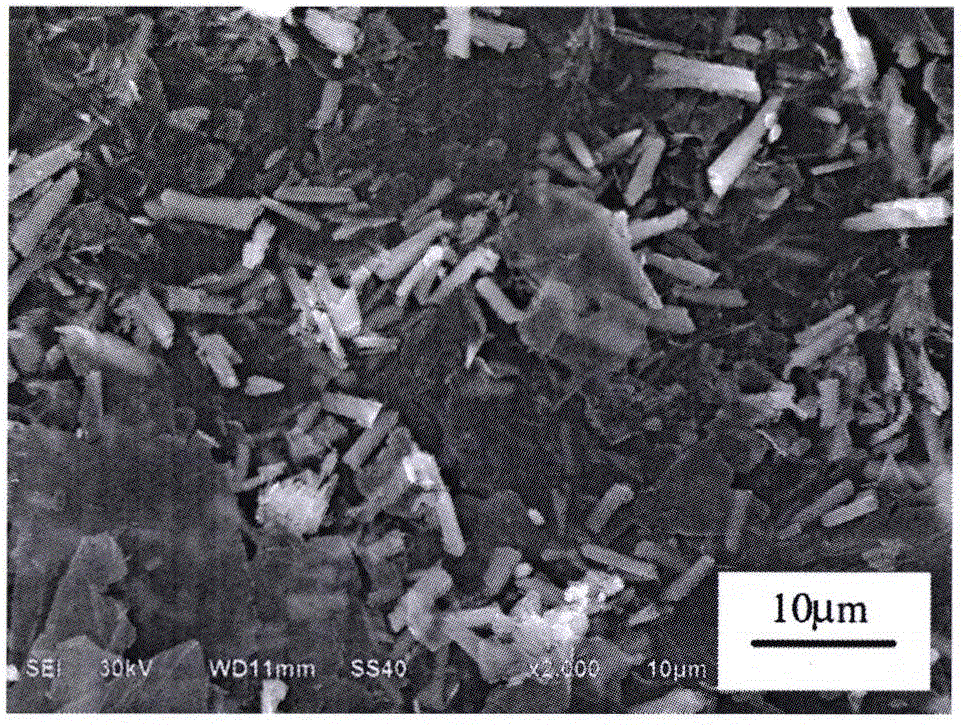Graphene/antimony sulfide composite photocatalyst preparation method
A graphene and antimony sulfide technology, applied in the field of photocatalysis, can solve the problems of easy recombination, reduced photocatalytic efficiency, low solar energy utilization rate, etc., and achieves the effects of simple production process, high visible light photocatalytic activity, and excellent product quality.
- Summary
- Abstract
- Description
- Claims
- Application Information
AI Technical Summary
Problems solved by technology
Method used
Image
Examples
Embodiment 1
[0022] (1) Add 30mg of graphene oxide (GO) into 60mL of deionized water, and ultrasonically disperse for 1 hour to prepare a 0.5mg / mL graphene oxide-deionized water dispersion.
[0023] (2) Add 0.26g of thioacetamide to the dispersion, the ratio of deionized water in the dispersion to the amount of sulfur in thioacetamide is 968:1, ultrasonically treat for 5 minutes, then add 0.23g of antimony tartrate Potassium, the ratio of the amount of sulfur in thioacetamide to potassium antimony potassium tartrate is 5:1, and magnetically stirred for 10 minutes to obtain a reaction mixture.
[0024] (3) The reaction mixture was transferred to a reaction kettle with a polytetrafluoroethylene liner, and reacted at 170° C. for 6 hours. After the reaction was completed, it was naturally cooled to room temperature, centrifuged, and the upper liquid was removed to obtain a black precipitate. The black precipitate was washed with deionized water and absolute ethanol alternately and ultrasonical...
Embodiment 2
[0026] (1) 30 mg of graphene oxide (GO) was added to 40 mL of deionized water, and ultrasonically dispersed for 2 hours to prepare a 0.75 mg / mL graphene oxide-deionized water dispersion.
[0027] (2) Add 0.49gL-cysteine to the dispersion, the ratio of deionized water in the dispersion to the amount of sulfur in L-cysteine is 550:1, sonicate for 6 minutes, then add 0.23 g antimony potassium tartrate, the ratio of sulfur in L-cysteine to antimony potassium tartrate is 6:1, and magnetically stirred for 22 minutes to obtain a reaction mixture.
[0028] (3) The reaction mixture was transferred to a reaction kettle with a polytetrafluoroethylene liner, and reacted at 160° C. for 10 hours. After the reaction was completed, it was naturally cooled to room temperature, centrifuged, and the upper liquid was removed to obtain a black precipitate. The black precipitate was washed with deionized water and absolute ethanol alternately and ultrasonically for 3 times, and then dried in ...
Embodiment 3
[0030](1) 50 mg of graphene oxide (GO) was added to 50 mL of deionized water, and ultrasonically dispersed for 2 hours to prepare a 1 mg / mL graphene oxide-deionized water dispersion.
[0031] (2) Add 0.49g L-cysteine to the dispersion, the ratio of deionized water in the dispersion to the amount of sulfur in L-cysteine is 690:1, ultrasonically treat for 10 minutes, then add 0.18 g antimony potassium tartrate, the ratio of the amount of sulfur in L-cysteine to antimony potassium tartrate is 7.6:1, and magnetically stirred for 30 minutes to obtain a reaction mixture.
[0032] (3) The reaction mixture was transferred to a reaction kettle with a polytetrafluoroethylene liner, and reacted at 180° C. for 12 hours. After the reaction was completed, it was naturally cooled to room temperature, centrifuged, and the upper liquid was removed to obtain a black precipitate. The black precipitate was washed with deionized water and absolute ethanol alternately and ultrasonically for 3...
PUM
| Property | Measurement | Unit |
|---|---|---|
| electron mobility | aaaaa | aaaaa |
| length | aaaaa | aaaaa |
| length | aaaaa | aaaaa |
Abstract
Description
Claims
Application Information
 Login to View More
Login to View More - R&D
- Intellectual Property
- Life Sciences
- Materials
- Tech Scout
- Unparalleled Data Quality
- Higher Quality Content
- 60% Fewer Hallucinations
Browse by: Latest US Patents, China's latest patents, Technical Efficacy Thesaurus, Application Domain, Technology Topic, Popular Technical Reports.
© 2025 PatSnap. All rights reserved.Legal|Privacy policy|Modern Slavery Act Transparency Statement|Sitemap|About US| Contact US: help@patsnap.com



